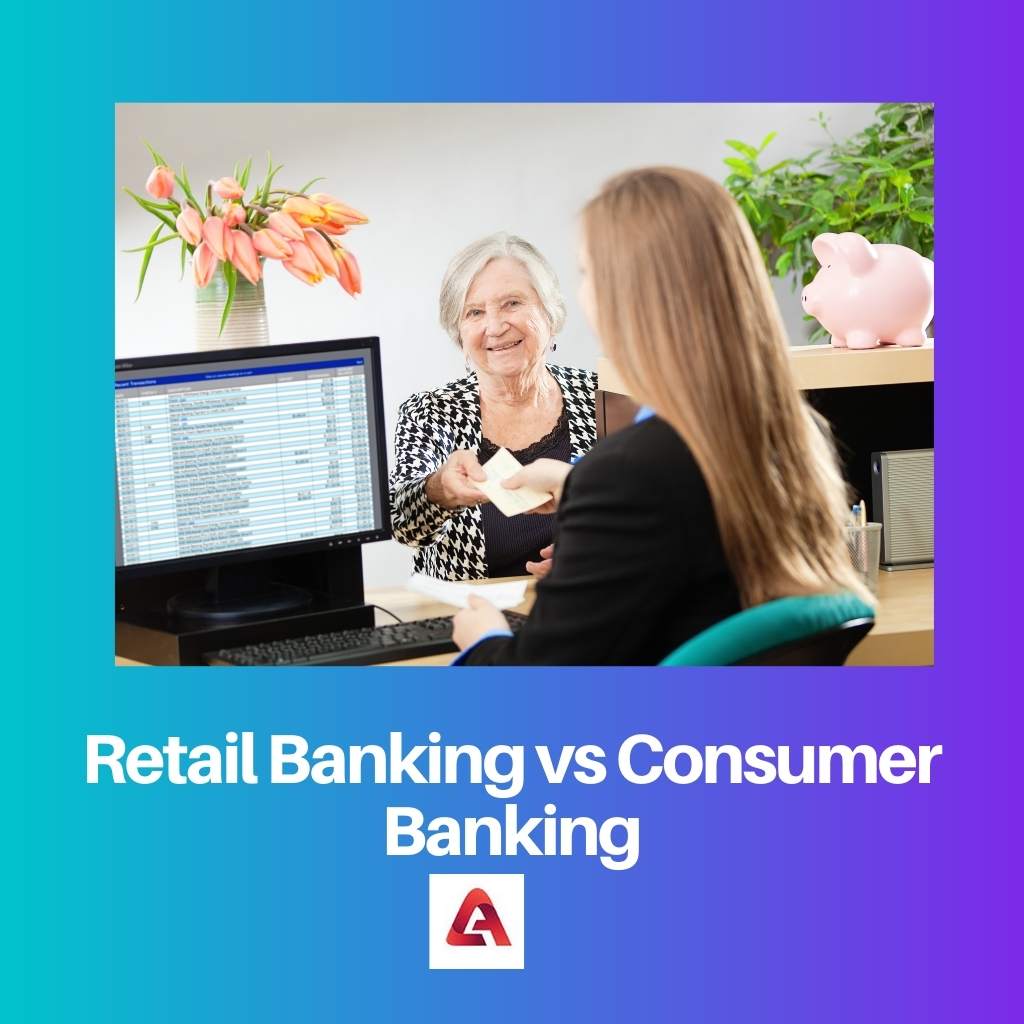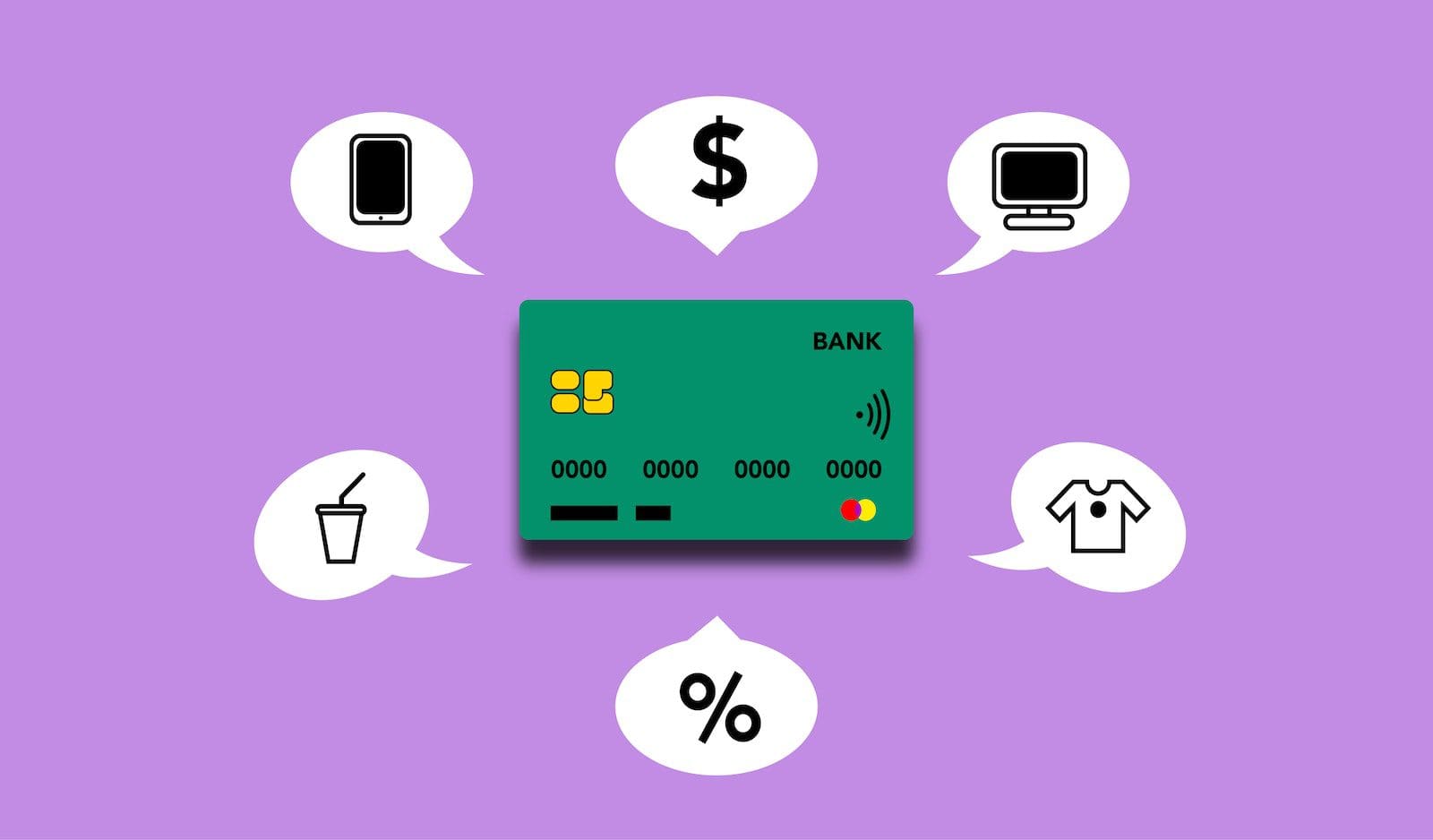Both retail banking and consumer banking are services provide to their customers with some additional facilities for their customers to keep their money safe in banks.
Key Takeaways
- Retail banking refers to banking services provided to individual customers, while consumer banking refers to banking services provided to consumers, which may include individuals or businesses.
- Retail banking focuses on deposit and withdrawal services, while consumer banking includes a wider range of services such as loans, credit cards, and investment products.
- Retail banking is provided through physical branches, while consumer banking may be provided through physical branches, online, and mobile channels.
Retail Banking vs. Consumer Banking
Retail banking is a type of banking in which services are given to the customers. Businesses are not involved in retail banking. Retail banking focuses on money deposit and withdrawal. Retail banking is also called private banking. In consumer banking, banking services are given to both customers and businesses. Loans are also provided in consumer banking. It also provides investment services.

Retail banking is also known as private banking, where people of high net worth and income have the facility to make their accounts in them.
Consumer banking is also known as personal banking, where people with a commonwealth and salary can make an account in such banks.
Comparison Table
| Parameters of Comparison | Retail Banking | Consumer Banking |
|---|---|---|
| Meaning | It helps provide services and products to its retail customers to increase their business. | It is a financial institution that provides Facilities and services to customers having a minimum income. |
| Services provided | They provide services such as ATMs, having an RD account, access to business loans, etc. | They provide services related to giving debit and credit cards and access to NEFT banking. |
| Another name | The other name for Retail banking is Private Banking. | The other name for consumer banking is Personal Banking. |
| Customer type | Customers of a Retail bank are people with a high net-worth | Customers in consumer banking are traditionally people with standard savings accounts. |
| Main function | They help in the improvement and liquidity of the money of an individual or an entity. | They help their customers to get loans and other card and online banking facilities. |
What is Retail Banking?
Retail banking is also known as private banking, where people of high net worth and income can make their accounts in them.
Retail banking offers access to an ATM card, mobile banking, RD account, etc. Retail banking is said to be a form of commercial banking that focuses on giving services to its customers.
Local people prefer retail banking more as they are more into business. Hence, retail banking is very efficient for the growth of the business of local people. Retail banks help in increasing liquidity and money supply.

What is Consumer Banking?
Consumer banking is also known as personal banking, where people with a commonwealth and salary can make an account in such banks.
In consumer banking, the banks provide access to internet banking, debit card, initiating a credit card balance, access to a feature of NEFT, etc.
The primary function performed in consumer banking is providing facilities on credit to a consumer banking customer.

Main Differences Between Retail Banking and Consumer Banking
- Customers in retail banking include individuals of high net worth, institutions, businesses, etc. On the other hand, customers in consumer banking have individuals with regular savings accounts, retired individuals, students, etc.
- The primary function that a retail bank performs is that they improve the supply and liquidity of money to increase the business of their customers. On the other hand, the primary function performed by a consumer bank is that it helps provide loans on a credit basis for their customers.

The article is well-structured and offers a clear understanding of retail and consumer banking. The provided references enhance the credibility of the content.
The comparison of retail and consumer banking was presented in a well-structured manner. However, I imagine a more entertaining approach to the topic could further engage readers.
The comparison table makes it easy to understand the differences between retail and consumer banking. The focus on essential parameters adds intellectual value to the article.
I found the coverage of services and types of customer associated with retail and consumer banking to be particularly insightful. It’s an excellent guide to differentiate between the two types of banking.
Agreed, the inclusion of the comparison table was beneficial for gaining a comprehensive understanding of retail and consumer banking.
The informative analysis provided a comprehensive overview of retail and consumer banking. It’s valuable for individuals and businesses as it helps in making informed decisions.
Highly informative! The article offered a comprehensive analysis, making it easier for readers to discern the pivotal differences between retail and consumer banking.
The post is very educational. The clear comparison table explaining key parameters of retail and consumer banking is especially beneficial for those new to the finance sector.
I’d have preferred a more in-depth look at the advantages and disadvantages of retail and consumer banking, but overall, the content is informative.
The article made it clear that retail banking and consumer banking are two distinct types of services, and it provided a clear comparison. It’s useful information for customers who might be unsure of the difference between the two.
I agree. What I liked most is that it outlined the main differences between retail banking and consumer banking, making it easier to understand the advantages that each offers.
It is informative and well-explained. The references also add credibility to the article. It is a good reference for anyone looking to learn the differences between retail and consumer banking.
The post makes an insightful distinction between retail banking and consumer banking, which is essential for those wanting a clearer understanding of the two.
It’s an excellent source for those interested in the banking industry. The information was precise, and the comparison table made it easier to comprehend the core differences between retail and consumer banking.
The detailed information about retail and consumer banking made it an interesting and enlightening read. It’s an excellent resource for anyone seeking to comprehend the nuances between these two banking services.
The clarity in detailing the services provided by retail and consumer banking helps in understanding the specific offerings of each. The article is an educational guide for differentiating between the two.
I appreciated the focused comparison between retail and consumer banking. The main differences are clearly outlined and supported with reputable references.
The post presents an excellent comparison between retail and consumer banking. This is essential information for those looking to understand the differences in banking services.
This article is beneficial for explaining the key differences between the two banking systems. The detailed comparison allows for a comprehensive understanding of each type of banking.
While the article offers a clear distinction, I believe it could benefit from a more nuanced perspective on how these two banking systems impact customers and businesses.